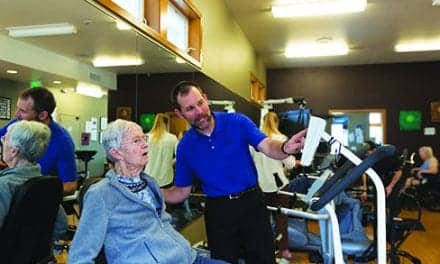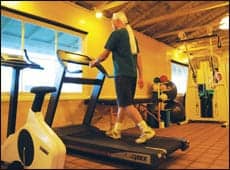Older post-stroke veterans who used yoga for rehabilitation saw positive results, according to an Indiana University study, funded by the Department of Veterans Affairs, QUERI. The study involved 19 men and one woman, with an average age of 66 years. For 8 weeks they participated in a twice weekly hour-long group yoga class taught by a yoga therapist who dramatically modified the poses to meet the veterans’ needs.
A range of balance items measured by the Berg Balance Scale and Fullerton Advance Balance Scale improved by 17% and 34% respectively by the end of the program. Lead researcher Arlene A. Schmid, a rehabilitation research scientist at the Richard L. Roudebush VA Medical Center, Indianapolis, Ind, determined there was a measurable gain in confidence and balance in participants.
The study participants performed poses initially while seated in chairs and then progressed to seated and standing poses. Eventually, they all performed poses on the floor, something Schmid considers significant because of a reluctance many older adults have to working on the floor. "Everything was modified because we wanted them to be successful on day one," Schmid said. "Everyone could be successful at some level."
A score of less than 46 on the Berg Balance Scale indicates a fall risk. Schmid said the study participants on average began the study with a score of 40 and then improved to 47, moving them past the fall risk threshold. The study participants also showed significant improvements in endurance based on a seated two-minute step test and a six-minute walk test.
Schmid has seen a small trend of occupational therapists and physical therapists also becoming yoga therapists. The yoga performed in the study was modified to the extent that Schmid said it would be very difficult to find a comparable class offered publicly.
[Source: Indiana University via Medical News Today]




